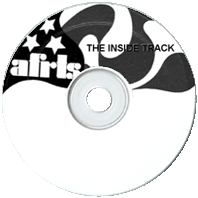

Hessler interviewed coaches, managers, ball players, scouts, and individual athletes about trends in their sports and what it takes to be great in each competition.

5 old time radio show recordings
(total playtime 1 hours, 16 min)
available in the following formats:
1 MP3 CD
or
2 Audio CDs
Text on OTRCAT.com ©2001-2025 OTRCAT INC All Rights Reserved. Reproduction is prohibited.

What do our fighting men do during these periods of downtime? They might take a few minutes to maintain their gear, or write a letter back home. Some might read a book or turn on the radio to listen to AFRS. If there are some balls available and room to run, they might get up a game. If there is a deck of cards or a set of dice, a game might begin which requires much less room. When the situation will not allow for these sort of activities, the men from different backgrounds from all around the country will simply talk to one another.
No matter where they are from, the first thing the young men are going to talk about is going to be girls. If they are American troops, sooner or later the conversation is going to turn to sports.

One popular post-War broadcast was The Inside Track, featuring San Francisco 49er's radio announcer, Fred Hessler. Hessler had been a navigator with the Army Air Corp during the War, and after his discharge settled in California where he got into broadcasting. For a time, Hessler worked part time at KMPC Los Angeles and at the AFRS studios. In the early 1960s, Hessler would become the voice of UCLA football and basketball, a position he would hold for the next 24 years.
For The Inside Track, Hessler interviewed coaches, managers, ball players, scouts, and individual athletes about trends in their sports and what it takes to be great in each competition. Sometimes the interview focused on great past performances while other times Fred was able to draw out a team's strategy for future success. His questions ranged from the coaching decisions of a professional football coach to why javelin throwers from Finland enjoyed so much success at the Olympics.
Text on OTRCAT.com ©2001-2025 OTRCAT INC All Rights Reserved. Reproduction is prohibited.
You have reached the maximum number of votes for a unregistered user.
Please login or create a new account to continue...
You have reached the maximum number to down votes in this page.



Inside Track Disc A001
|
Add Audio CD to Cart - $5.00 |
Inside Track Disc A002
|
Add Audio CD to Cart - $5.00 |
Please wait...
COMMENTS
Scott Verified Purchase
Leave a comment